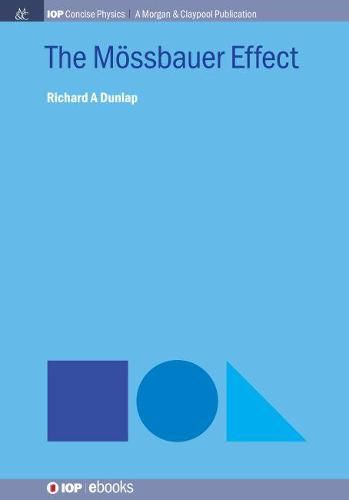Readings Newsletter
Become a Readings Member to make your shopping experience even easier.
Sign in or sign up for free!
You’re not far away from qualifying for FREE standard shipping within Australia
You’ve qualified for FREE standard shipping within Australia
The cart is loading…






This title is printed to order. This book may have been self-published. If so, we cannot guarantee the quality of the content. In the main most books will have gone through the editing process however some may not. We therefore suggest that you be aware of this before ordering this book. If in doubt check either the author or publisher’s details as we are unable to accept any returns unless they are faulty. Please contact us if you have any questions.
The effect which now bears his name, was discovered in 1958 by Rudolf Moessbauer at the Technical University of Munich.
At first, this appeared to be a phenomenon related to nuclear energy levels that provided some information about excited state lifetimes and quantum properties. However, it soon became apparent that Moessbauer spectroscopy had applications in such diverse fields as general relativity, solid state physics, chemistry, materials science, biology, medical physics, archeology and art. It is the extreme sensitivity of the effect to the atomic environment around the probe atom as well as the ability to apply the technique to some interesting and important elements, most notably iron, that is responsible for the Moessbauer effect’s extensive use. The present volume reviews the historical development of the Moessbauer effect, the experimental details, the basic physics of hyperfine interactions and some of the numerous applications of Moessbauer effect spectroscopy.
$9.00 standard shipping within Australia
FREE standard shipping within Australia for orders over $100.00
Express & International shipping calculated at checkout
This title is printed to order. This book may have been self-published. If so, we cannot guarantee the quality of the content. In the main most books will have gone through the editing process however some may not. We therefore suggest that you be aware of this before ordering this book. If in doubt check either the author or publisher’s details as we are unable to accept any returns unless they are faulty. Please contact us if you have any questions.
The effect which now bears his name, was discovered in 1958 by Rudolf Moessbauer at the Technical University of Munich.
At first, this appeared to be a phenomenon related to nuclear energy levels that provided some information about excited state lifetimes and quantum properties. However, it soon became apparent that Moessbauer spectroscopy had applications in such diverse fields as general relativity, solid state physics, chemistry, materials science, biology, medical physics, archeology and art. It is the extreme sensitivity of the effect to the atomic environment around the probe atom as well as the ability to apply the technique to some interesting and important elements, most notably iron, that is responsible for the Moessbauer effect’s extensive use. The present volume reviews the historical development of the Moessbauer effect, the experimental details, the basic physics of hyperfine interactions and some of the numerous applications of Moessbauer effect spectroscopy.